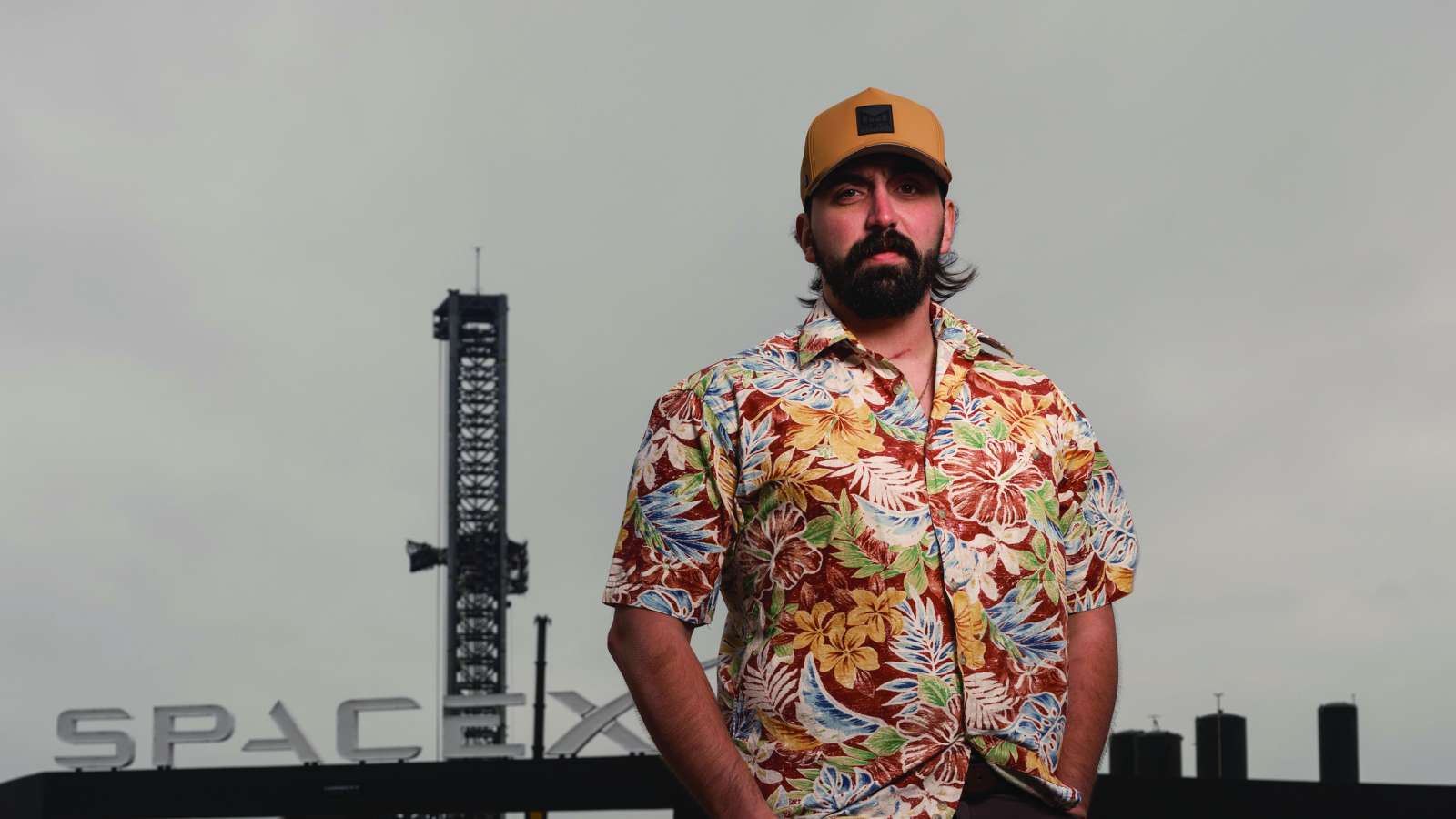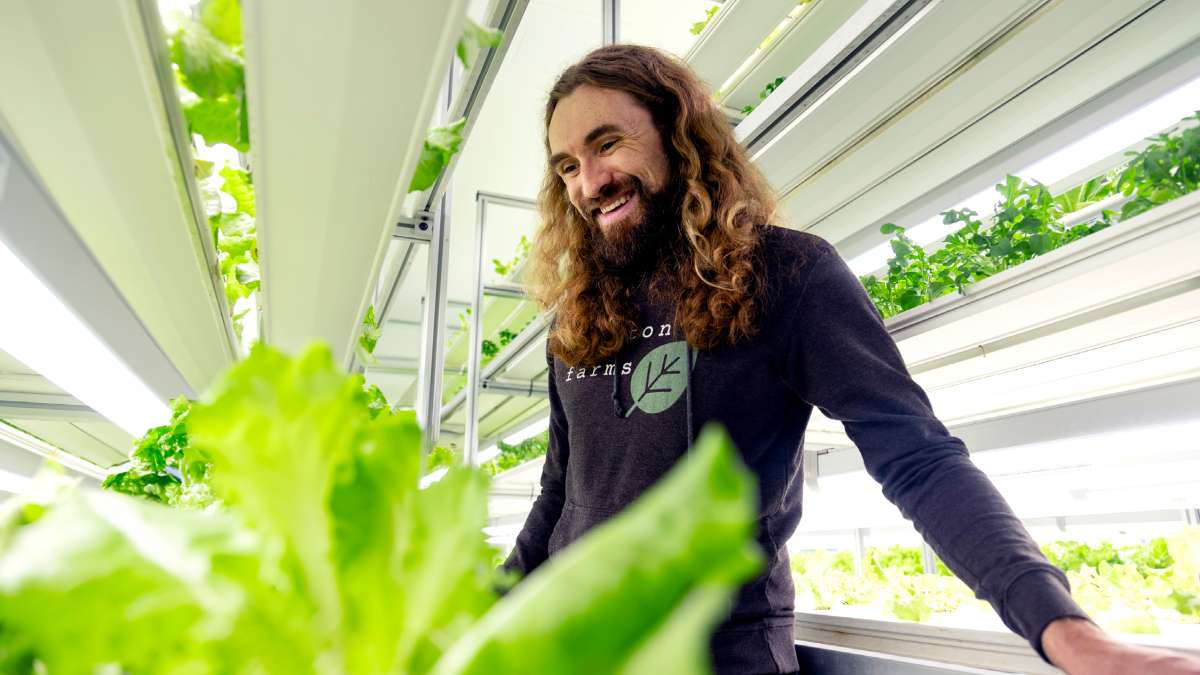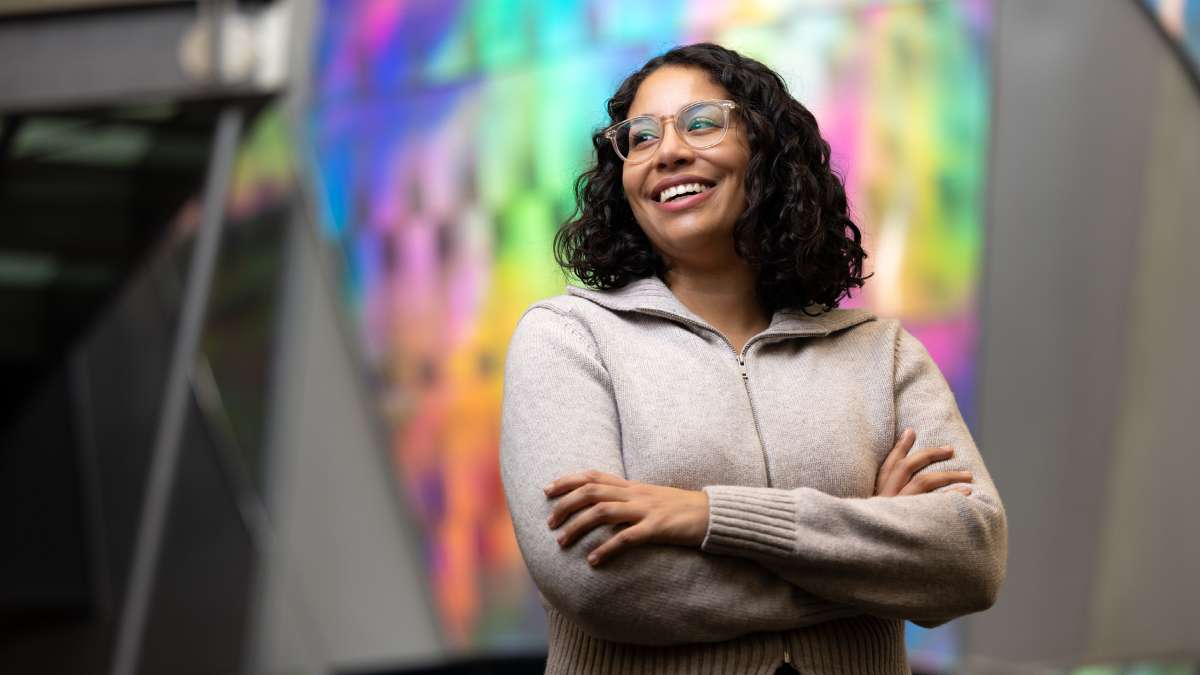We all know the saying, “reach for the stars.” That literal endeavor has seen the efforts of SpaceX and its rockets dominate recent news, and imagination, in a reignited love affair with space. And an Iowa State graduate is at the heart of those innovations.
Dereck Ioos (’18) has been part of developing rocket engines for SpaceX since 2019. He’s currently a lead propulsion engineer with the company and says he’s extremely proud to have transitioned from his student experience with Iowa State to the experience of pioneering a new age of space exploration in a few short years.
“I’ve always pursued the biggest challenges, and when I found out what SpaceX was doing while I was studying at ISU, I set my sights on them,” Ioos says. “I’ve worked closely with a team of very talented, scrappy, and highly motivated engineers — all of whom I’m proud to call family. Together we have pushed the boundaries of what was possible, doing what some people dubbed impossible or even unrealistic.”
SpaceX’s Starship Super Heavy launch vehicle, the heaviest, tallest and most powerful rocket to ever get airborne, did so with the thrust of SpaceX Raptor engines that Ioos helped develop. His team has worked on the in-house machining of valves and turbomachinery that power and control the engines. They powered launches of Starship orbital test flights in April and November 2023.
“Watching all of that power, precision, and hard work speeding through the sky was a feeling unlike any other and a feeling that keeps me forever excited about what I get to do every day,” he says.
His career trajectory was set as an undergraduate at Iowa State when he discovered a love of hands-on machining work as a complement to his aerospace engineering major. He spent many hours in Iowa State’s Machine Shop working on diverse projects.
Iowa State connections are strong in the world of SpaceX, and Matthew Greiner (’23) has also had a hand in the same rocket engine functions through an internship he completed at SpaceX last year. It included working on some tasks alongside Ioos and supplying Ioos’ team with 3D-printed engine parts.
“SpaceX is changing the fundamental trajectory of mankind through reusable spaceflight, so having the opportunity to work closely with the teams that are making this possible was one of the greatest experiences I could have asked for,” Greiner says. “I think enabling us to become a spacefaring civilization is a lot more important than most people realize.”
For both Ioos and Greiner, their “basic training” in managing demanding engineering projects came while students at Iowa State through their involvement with the Cyclone Rocketry student organization. Ioos and fellow undergraduate Maciej Batura (’18), former head of stage operations at ABL Space Systems, founded Cyclone Rocketry. That group has since seen exponential growth and established a strong reputation among student rocketry groups nationwide. The team took a second-place finish in its division in the prestigious Spaceport America Cup annual student rocketry event in New Mexico in 2022. Other alums of the Cyclone Rocketry program have gone on to careers in space development, including some who are now employed at SpaceX.
Future plans for SpaceX’s Super Heavy-Starship are extensive, and Ioos will be highly involved. He recently moved to Brownsville, Texas, where he will lead the program’s integration team as a lead build engineer for the Super Heavy Booster, which uses the same Raptor engines he helped develop. The platform is designed to carry up to 100 people on long-duration, interplanetary flights (including to Mars), and to help with satellite delivery, development of a moon base, and point-to-point transport on Earth. Challenges for SpaceX have been many, but Ioos and others continue to look forward.
“My goal for the future is simple,” he says. “Build the rockets that get humans to other planets. In the next five to 10 years, I will continue working with and leading the greatest engineers in the world to build the vessels that will take us to new ones. This is only the beginning.”


